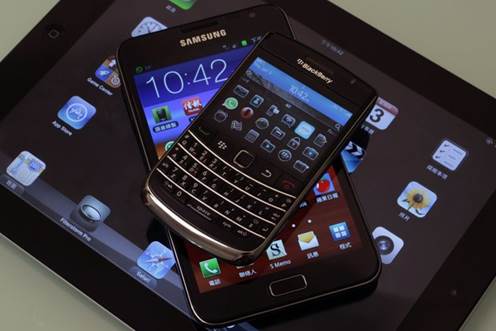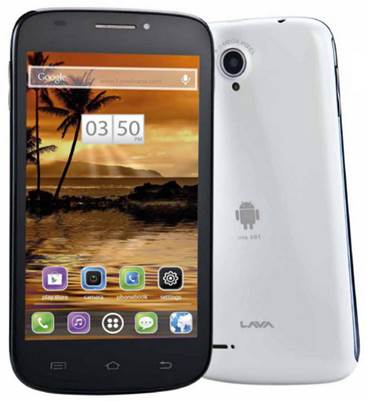Large phone or small tablet, the
ever-growing acceptance of large screens will ensure this year the phablet will
become main-stream.
Big smartphones with screens larger than
five inches are no longer a rarity. In fact, they are fast becoming bestsellers
in India and across the globe.
When Dell stared the trend in 2010 with its
5-inch Android smartphone Streak, it came in for criticism for a big and bulky
design. In 2011, Samsung tried to create a new category with its Galaxy Note.
Slightly sleeker and lighter than the Streak, the Note had a 5.3-inch
capacitive display and an S Pen functionality that caught everyone’s attention.
Even as the industry tried to figure out Q what to make of the large smartphone
small-tablet, Samsung announced that it had sold a million Notes in less than
two months.

Large
phone or small tablet, the ever-growing acceptance of large screens will ensure
this year the phablet will become main-stream
Samsung followed it up with an equally
successful Galaxy Note II which sported a 5.5-inch touch display.
Market intelligence firm IHS iSuppli
predicts phablet shipments will more than double to 60.4 million units
worldwide this year. Amit Gujral, Marketing Head, LG mobiles says the phablet
or the super smartphone is here to stay. “More and more data consumption and
increase in web browsing makes larger displays desirable. Tablets cannot be
carried everywhere and won’t fit into our pockets. We always like to use our
phones as mini-computers and we always desire our phones should work more and
more as our computers do.”
The biggest reason behind the sudden
success of this new category is the changing behavior of smartphone users.
Linda F. Kozlowski, Director of Market Development, APAC, Evemote explains, “All
devices have different advantages. While smartphones are more portable, giving
users immediate, easy access anywhere and anytime, phablets provide a larger
viewing area that allow users to consume more content easily. “
With the more smart functionalities and
processing power being added to smartphones, we are no longer solely dependent
on the laptops to access emails, browse the web, play games or handle
documents. However, the smaller display sizes have always been a spoiler for
people who wanted to do more with their phones. While some found it tough to
browse the web on smaller screens and needed to zoom in to read the text
better, others struggled with the virtual keyboards on 3-inch screens. The
5-inch, or larger, screen eliminates these problems and also adds to the
multimedia experience.
“Phablets have brought in one more option
for consumers to access the web. Its larger screen size will definitely
encourage consumers to spend more time on browsing the web through the device
compared to what they would do on a phone,” says Sunil Kamath, VP for South
Asia, Opera Software.

“Phablets
have brought in one more option for consumers to access the web.
Another factor, which is key in the Indian
market, is the pricing of these devices. There are already many phablets
selling for under? 10,000 and provide a good mid-way device for those planning
to buy a smaller smartphone and a larger tablet.
“Keeping in mind the utility that the five inch
screen has to offer, we think phablets will get most acceptance in emerging
markets like India where the mass do not have the luxury of owning both, a
smartphone and a tablet. We also feel the Android platform will have a greater
advantage on phablets and will hold a higher value as it will be a more
comfortable experience for its users on the go,” says Andre Sommer, Marketing
& Advertising Head, eBuddy.
But the phablet and its large screen comes
with its own set of disadvantages. These big devices aren’t very good for
single-hand operation. Plus, the larger display drains the battery faster. But
that isn’t stopping this segment from growing large and maybe even dwarf the
other smartphones soon.
The wannabe
Lava IRIS 501
·
Price: $174
·
Specs: Android
ICS; 5-inch capacitive display; 5MP camera; 1 GHz dualcore processor; 512MB RAM;
1GB internal storage, 32GB expandable; dual-SIM, 3G, Wi-Fi, Bluetooth; 2300 mAh
battery; 185 grams
After introducing some decent Android
smartphones, Lava has now launched a 5-inch phablet called the Iris 501.

Lava
IRIS 501
The Iris 501 has a curved design with the
large capacitive touch display dominating the front above illuminated home,
back and menu key A 3.5-mm headphone jack and charging port have been placed on
the top, with volume controls on the left panel and power and lock keys on the
other side. Although the device looks neat, it is comparatively heavy to hold
The touch was responsive with no lag.
Though this one too runs an Android Ice Cream Sandwich operating system, the user-interface
has been customized with curved icons and is very refreshing. The pre-loaded
apps here include CricketFever, Asphalt6, Fusion, Hike, Little Big City
Lava's tryst with Intel is limited to the
Xolo range, so the Iris 501 runs on Mediatek's chipset powered by a 1 GFHz
dual-core processor with 51 2MB RAM. The browsing experience was really smooth
and video too worked fine. But the phablet failed to rise to expectations when
we used a data intensive app with some others running in the background.
This device comes with a 5MP rear camera which
captures good images and videos. The 0.3MP front camera is just about okay for
video calling.
The IRIS 501 has some shortcomings too. For
instance, the screen has a poor viewing angle and there is just 1GB storage
onboard for saving applications. Thankfully, this supports up to 32GB of
expandable memory - there is a 4GB memory card in the box. The Lava Iris 501
packs in a 2300 mAh battery that lasts a day and a-half between the charges.